RothStauffenberg: Based on a True Story
Edition Patrick Frey
ISBN 978-3-905509-74-8
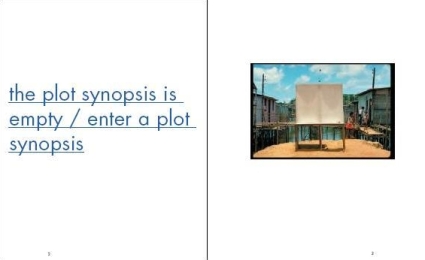
The bad boys of ProtoCinema, Franz Stauffenberg and Christopher Roth, have revisited the book form as venue for their work, accepting the aspects of cinema as “evidence” and “experience,” rather than as documentation and imagination. By way of presenting a survey of their work up to The Nation of Mozartbique, through an interview with Korean filmmaker Shin Jun-chul regarding his work in Mozambique, they create a cinematic experience, thereby vitally corresponding form and content.
The Book is a Cinematic Experience.
Their particular approach lies in the “ruins” of ProtoCinema—a realm of memory and loss as a presupposition of an archetypal future. As prefigured by Jean-Luc Nancy, this notion is tied to the way existence resists the indifference of time; it lives beyond mechanical "life.” It becomes figure-image, figure-language. It does not become alienated in image/language, but it is presented there: the images and text are the evidence of its existence, the objectivity of its assertion, fraying a path so that the path itself becomes thought. “It is that which frays images so that images become this thought, so that they become the evidence of this thought—not a mere representation of it.”
In other words, wanting to do more than just represent existence as thematic oppositions, and instead to show the way in which each “thing” is inevitably and profoundly within the same continuum of time and experience. Because "existence" means more than simply life, it is projective, containing an irreducibly fictive element. In this way "being more than" life, it is therefore contaminated by our own need to affix it. As Jean-Luc Nancy suggests, “the lie is the only way to truth.” It is time’s continuum, where, all things:

Yes, there is no verb in “Where, all things.” There is no “is/are.” Particularly, continuum.
But what is the lie, then?
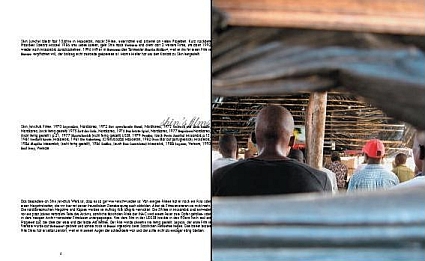
We should establish certain ideas, here. The term Post Cinema (although fixed to an unfortunate association with the Postmodern) has aptly referred to cinema made of multi-projections on a number of screens, possible points of view, and physical positions of the spectators, developing out of the forced estrangement of the 20th Century spectator (a dark room, physical and perceptive isolation, a monodirectional viewing perspective.) From the environment of the Happenings of the 1960's, the philosophy of expanded cinema, and successive multimedia installation experiments of the 1980's, the new cinema primarily responded to a materialist variant upon the form.
Yet, Structural-Materialist filmmakers like Hollis Frampton and Michael Snow hinted to new, more elemental aspect of the medium: the frame, projection, and most importantly, time. By breaking film down into bare components, they sought to create an anti-illusionist cinema. In many respects, this materialist approach informed the Digital Media artists of today, perhaps more than the ProtoCinema artists who look more to philosophy and the cinematic tradition itself, responding to, like the Structuralist, the aesthetic imperative of a critical perceptual shift.
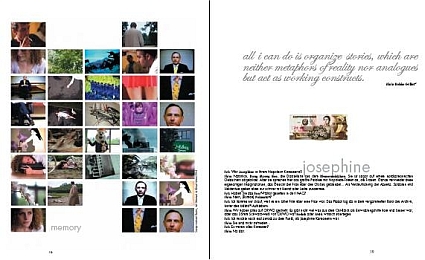
ProtoCinema work expressly uses a mass cinema or filmic language but does not strive to create the traditional or linear narrative pervasive of the industry; rather using it’s semeiotic (iconic and symbolic) language as a tool to convey the essence of a set of possible narratives or a singular paradox. Because they are not limited to story, while using narratological tools, these works often seem allegorical by alluding to disparate imagery—conveying a meaning different from the literal.
Although this ProtoCinema communicates through the use of the visual neologisms that more readily occur in the spitfire of a media-centric culture, its methodology is a natural occurrence of all forms on the verge of burgeoning a new form. Like a cluster of neologistic words, their meanings may remain unstable or in flux, requiring or rather insisting, that the viewer himself stand within the work (in order to fix the signification). Often these result in multimedia installations that resemble a film set itself, the residue of filming or the physical suggestion of a filmic narrative. Certain single channel projection may portray the projection as an object itself, beyond the cinematic content within. And, in other instances, the viewer is engaged to edit the content through use of multiple channel projections and interactive systems.
So here we have RothStauffenberg and their book, Based on a True Story.
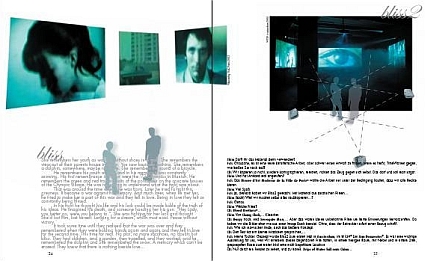
Their upcoming exhibition, It's not about YOU, it's about THEM at The House at Nyehaus, NYC, will lay bare another variant on the cinematic experience. Previous works like, What the...?, Monster, and Die Treppe ist der Vater have already provided a model for the ProtoCinema paradigm—the installation as a cinematic experience—activating a cognitive process inherent to cinema outside the parameters of its traditional aspects. Although the methodology of this could be explicated, it is perhaps more simply said that “you know it when you see it,” and better still, “you know it when you experience it.” Utilizing unstable elements of representational associations (again, first as evidence, alternating perhaps as metaphor), like a dishevelled room, disparate sounds and music, often unrecognizable “ready-mades” and baroque (in this sense, exposing the luxurious intricacy of decimation from the “modern”) architectural interventions, the works immediately place the spectator within a parallel frame of existence. It is not by coincidence that their spectator exists in a paradigmatic realm of reality TV and has already been indoctrinated into a perverse mirror where banality can be a metaphor for drama and subject and object are transposable. Today’s reader, viewer, spectator is ripe to rest (in short intervals) within a frame outside of time and place, and ultimately of person.
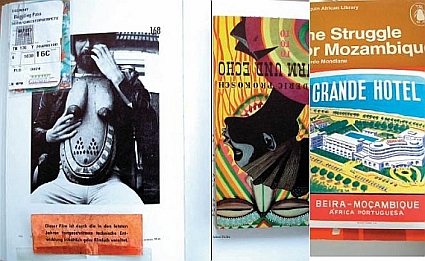
In the introduction given by Christopher Petit, the seminal British Writer/Film Critic/Director of Radio On, at the book’s launching (Michelle Nicol Fine Arts in Zurich), he remarked:
“RothStauffenberg subscribe to the poetics of space, as proscribed by Gaston Bachelard, who wrote that to remember all the doorways through which you have walked is to remember the story of your life. (…) Antonioni, obsessed with Hitchcock, talked of shooting a scene with a man thinking about opening a door in a long, empty hotel corridor, and making the audience wait, beyond the point of boredom, until suspense took over and danger was sensed. ‘Hitchcock, eat you heart out,’ he said. ‘I can do it better with no props, nothing, just a man standing alone in an empty corridor, waiting to turn the handle of a door.’ (The…) door is a threshold; it is Glenn Ford and Gloria Graham behind the door in Fritz Lang’s Human Desire. It is the detective fiction notion of the other side—how to ‘read’ the room and what it means. Rooms become containers of memory and film moments, rooms become a museum, in memory of cinema. But it is up to the viewer in the end to give them meaning. For those with a secular faith in the power of the image they become quasi-religious spaces, like way-stations or shrines. For the Jansenist, they confirm Robert Bresson’s belief that true cinematic art is based on fragments. (And fragmentation is not fun.) And in this, RothStauffenberg remind me of a quote by the exile German director Max Ophuls who said, ‘Happiness is not fun.’ ”
And no more truly said than in RothStauffenberg’s early fragmented, single channel film, Happier Days.

Already we know that in reading an interview, it is easy to visualize the participants sitting across from each other at a table—the “table”—and so the suggestion of a specifically cinematic mise-en-scène reasonably follows (although specific to fiction) but in Based on a True Story, RothStauffenberg have delivered the reader into the text, into a cinematic experience through a discussion about cinema with Shin Jun-chul. Again, in this sense, it is the “lie” that is most active: The lie that is memory itself, the lie that is the loss of memory and loss of memory’s representations and the lies of the present (three voices citing disparate, often contrary, records), mirrored by a entanglement of footnotes:
cxcix Mikhail Mikhailovich Bakhtin *17.11.1895 †7.3.1975 His notion of carnival is connected with that of the grotesque. The collectivity partaking in the carnival is aware of its unity in time as well as its historic immortality, associated with its continual death and renewal. The body is in need of a type of clock if it is to be aware of its timelessness. The grotesque is the term used by Bakhtin to describe the emphasis on bodily changes through eating, evacuation and sex: it is used as a measuring device.
cc Ko San *19.10.1976 the first Korean in space (see also kimchi)
cci John Milius *11.4.1944 co-wrote Dirty Harry 'Go ahead, make my day' and Apocalypse Now 'Charlie don't surf' and the famous USS Indianapolis monologue for Steven Spielberg's Jaws. He directed Big Wednesday, Dillinger, The Wind and the Lion, Conan the Barbarian, and in 1984 the Red Dawn, a Soviet invasion of the United States. Considers himself as a 'zen anarchist'. 'I love the bomb. It's sort of a religious totem to me. Like the plague in the Middle Ages, it's the hand of God coming out indiscriminately to snatch you.' (see also Big Wednesday! )
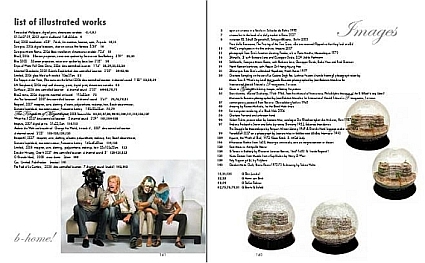
Beyond Bataille’s posit, "To think like a woman undresses," RothStauffenberg’s provocation here is Scheherazade; it is the dance of one thousand and one veils, where the veils are information and we, the reader, are called out onto the floor. It is a chicken dance.
Based on a True Story; page 103:
FvS: There is a text about mimesis by Surrealist Roger Caillois , published in Minotaure in the 1930s. One part is about losing boundaries, sich verräumlichen, you call it in German, becoming space… The space as a devouring force that is encircling and pursuing… In this moment, the body separates itself from thought, and the individual occupies the other side of the senses…
CR: …the space takes its place…
Shin: All these stories are about devotion.
FvS: …to lose oneself in a lost surrounding…
CR: …about demanding spaces. Our space is sucking… while dis-placing itself…
FvS: …pursuing and encircling…
Shin: …and allows no mapping. What the…?
CR: Caillois writes at the end, that the space is similar, not similar to something, but just similar!
Shin: That sounds like Horror.
FvS: (laughs) He was a friend of Michel Leiris and (Georges) Bataille.
CR: (Antonin) Artaud suggests in The Theatre and Its Double this Being… this entirely invented Being, disquieting by nature and not responding to anything… This Being is supposed to refresh the breath of metaphysical fear the ancient theatre had. Artaud considers this fear as essential to the theatre.
Shin: And this Being is supposed to move in with you?
CR: Why not?
FvS: It waits already in front of the Museum…
CR: …and catches some fat carps from Maschsee.
Shin: (H.P.) Lovecraft comes to mind.
FvS: Very good.
RothStauffenberg
It's not about YOU, it's about THEM
The House at Nyehaus
November 6th through December 20th
Opening: 6-9pm
Address: 15 Grammercy Park South
Hours: By Appointment
Info: nyehaus.com
You Are Brilliant!
This is really brilliant Arfus. Thanks! You are really onto something.
http://nujus.net/~gh